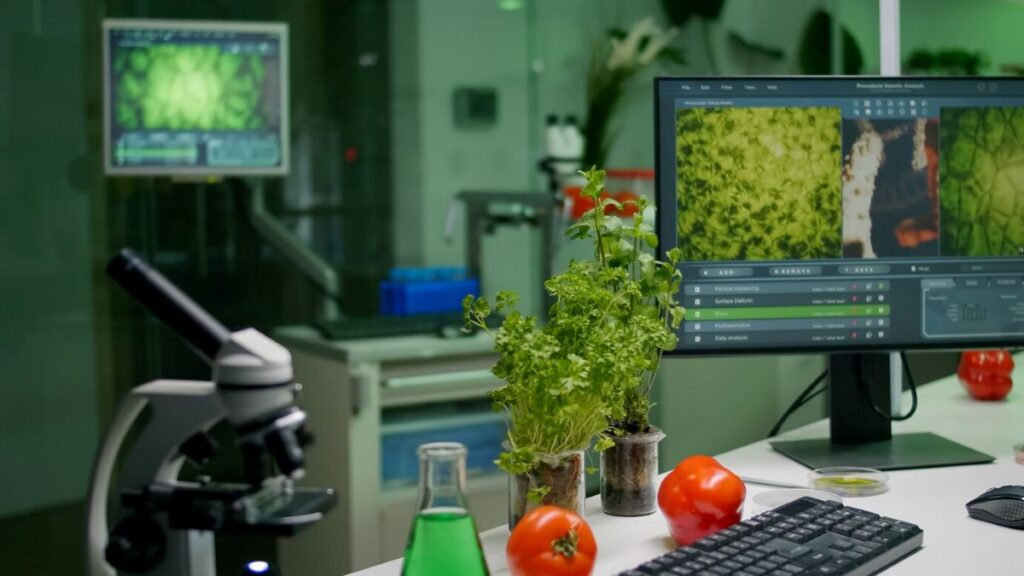Food safety software solutions represent a transformative shift in how businesses manage their compliance requirements. These digital platforms integrate essential functions like automated record-keeping, real-time monitoring, and comprehensive reporting capabilities into a unified system.
The food industry faces stringent regulatory demands, making compliance efficiency crucial for operational success. Traditional paper-based methods create unnecessary complexities, increasing the risk of errors and non-compliance. Modern software solutions address these challenges by:
- Streamlining documentation processes
- Automating compliance tracking
- Providing instant access to critical data
- Ensuring accurate record-keeping
- Facilitating real-time monitoring
These digital tools revolutionise compliance management by replacing manual processes with automated systems. Through features like customisable checklists, temperature monitoring sensors, and automated alerts, food safety software solutions enable businesses to maintain consistent compliance standards while reducing operational costs.
The implementation of these solutions marks a significant advancement in food safety management, offering businesses the tools needed to protect consumer health and maintain regulatory compliance efficiently.
The Role of Compliance in the Food Industry
Food safety regulations are essential for protecting consumers and ensuring honesty in the food industry. These regulations include several important frameworks:
- HACCP (Hazard Analysis Critical Control Point): A systematic approach to identifying and controlling food safety hazards
- GMP (Good Manufacturing Practices): Standards ensuring consistent quality in food production processes
- FSMA 204: Requirements for enhanced traceability records for designated foods
Food businesses must strictly follow these regulations while dealing with significant operational challenges:
1. Documentation Complexities
Food businesses often face difficulties in managing their documentation processes, which can impact compliance efforts. Some common challenges include:
- Multiple paper-based records
- Time-consuming manual data entry
- Risk of human error in record-keeping
- Physical storage limitations
- Difficulty in accessing historical records
2. Supply Chain Visibility Issues
Maintaining visibility across the entire supply chain is crucial for effective compliance management. However, food businesses may encounter various obstacles such as:
- Limited real-time tracking capabilities
- Disconnected communication between suppliers
- Delayed response to food safety incidents
- Complex product recall procedures
- Incomplete audit trails
3. Resource Management Struggles
Efficiently managing resources is vital for meeting compliance requirements. Food businesses may face challenges related to resource management, including:
- Labour-intensive monitoring processes
- Inconsistent quality control measures
- Training documentation challenges
- Time-consuming compliance reporting
- Difficulty maintaining up-to-date regulatory knowledge
These regulations protect public health through standardised safety protocols, allergen controls, and contamination prevention measures. Companies must demonstrate compliance through detailed documentation, regular audits, and consistent monitoring of critical control points.
The complexity of modern food supply chains adds another layer of challenge, requiring businesses to track ingredients from source to final product. This intricate web of suppliers, processors, and distributors demands robust systems for maintaining compliance standards throughout the entire production cycle.
How Food Safety Software Solutions Enhance Compliance Efficiency
Food safety software solutions are changing the way businesses manage compliance by using advanced technology to digitise and automate processes. These digital tools replace traditional manual methods with streamlined operations that are less prone to errors, resulting in more accurate and accessible data.
Automated Compliance Management
With food safety software, businesses can automate various compliance tasks, such as:
- Tracking critical control points in real-time
- Sending instant alerts for temperature deviations or safety breaches
- Scheduling safety checks and inspections automatically
- Documenting compliance activities digitally
By implementing automated systems, businesses can reduce human error by up to 73% and increase operational efficiency through standardised processes. This means that tasks are completed consistently and accurately, leading to better overall compliance.
Enhanced Traceability Management
Traceability is a crucial aspect of food safety, and software solutions can greatly improve this process. With digital traceability systems in place, businesses can:
- Track products from their source all the way to the consumer
- Document and monitor specific batches of products
- Gain visibility into every stage of the supply chain
- Quickly identify affected products during recalls
This level of detail is invaluable during audits and investigations, as it provides precise information about how products have moved and been handled throughout the supply chain.
Risk Management and Prevention
Another key benefit of food safety software is its ability to help businesses manage and prevent risks. These solutions incorporate sophisticated algorithms that can:
- Automatically assess potential risks
- Send early warnings for hazards that may arise
- Use predictive analytics to prevent future incidents
- Track corrective actions in real-time
By detecting potential safety issues before they become major problems, businesses can take proactive measures to protect their customers and maintain compliance.
Supplier Management Integration
Maintaining strong relationships with suppliers is essential for ensuring consistent quality standards. Food safety software can streamline this process by:
- Verifying suppliers digitally
- Automatically tracking supplier performance
- Documenting supplier compliance
- Integrating with supplier quality metrics
By managing supplier relationships digitally, businesses can ensure that their suppliers meet the necessary food safety requirements and maintain high standards throughout the supply chain.
These technological advancements create a robust framework for maintaining food safety standards while reducing the administrative burden on staff. The integration of these digital tools results in a more efficient, accurate, and responsive compliance management system.
Moreover, it’s important to note that these software solutions also align with guidelines set forth by regulatory bodies such as the FDA. For instance, they can assist businesses in adhering to the FDA’s Food Safety Modernization Act (FSMA), which aims to ensure that the U.S. food supply is safe by shifting the focus from responding to contamination to preventing it.
Simplifying Audit Preparedness with Food Safety Software Solutions
Food safety software solutions transform audit preparation from a stressful scramble into a streamlined process through standardised procedures and digital documentation management.
Standardised Internal Processes
- Built-in templates ensure consistent compliance with regulatory requirements
- Automated workflows guide staff through required procedures
- Real-time monitoring validates adherence to established protocols
- Customisable checklists adapt to specific business needs while maintaining compliance standards

Digital Documentation Management
- Centralised electronic storage eliminates paper-based filing systems
- Advanced search capabilities enable quick document retrieval
- Time-stamped records provide clear audit trails
- Cloud-based access allows authorised personnel to review documentation from any location
The digital transformation of audit preparation delivers tangible benefits:
- Reduced Preparation Time: Instant access to required documentation
- Enhanced Accuracy: Elimination of manual filing errors
- Improved Organisation: Structured digital filing system
- Real-time Updates: Immediate documentation of compliance activities
- Simplified Retrieval: Quick access to specific records during audits
Food safety software solutions create a proactive audit preparation environment. The system’s continuous monitoring and documentation capabilities ensure businesses maintain audit-ready status at all times, rather than rushing to prepare when audits approach. Click here to get more about Wireless Freezer Temperature Monitoring: Protecting High-Value Stock.
Enhancing Communication and Collaboration Across Teams and Locations
Food safety software solutions eliminate geographical barriers through integrated communication platforms. These digital tools create centralised hubs where team members can access, share, and update compliance information in real-time.
Key communication features include:
- Instant messaging systems for quick problem resolution
- Digital task boards displaying progress across locations
- Mobile notifications for urgent compliance matters
- Shared calendars for coordinating inspections and audits
Teams benefit from:
- Real-time updates on compliance status
- Standardised reporting formats across locations
- Immediate access to expert guidance
- Reduced response times to food safety incidents
Cloud-based platforms enable multi-site operations to maintain consistent safety standards. Regional managers track compliance activities across different locations through unified dashboards. This visibility helps identify best practices and areas needing improvement across the organisation.
The integration of video conferencing tools supports virtual training sessions and remote consultations, ensuring all team members receive consistent guidance regardless of their location.
Specific Features That Drive Compliance Efficiency in Food Safety Software Solutions
Food safety software solutions incorporate powerful features designed to streamline compliance processes and enhance operational efficiency. These advanced capabilities transform traditional manual methods into automated, precise systems.
Automated HACCP Plans Creation
Modern food safety software accelerates HACCP plan development through:
- Template-Based Systems: Pre-built templates aligned with industry standards
- Risk Assessment Tools: Built-in algorithms to identify potential hazards
- Critical Control Point Mapping: Digital workflows for establishing monitoring procedures
- Customisable Parameters: Adaptable settings for different food production processes
Real-time Monitoring and Alert Systems
Digital solutions enable proactive food safety management through sophisticated monitoring capabilities:
- Temperature Tracking: Continuous monitoring of storage and cooking temperatures
- Humidity Control: Automated tracking of environmental conditions
- Time Management: Digital timestamps for critical processing stages
- Immediate Notifications: Instant alerts when parameters deviate from set standards
The integration of these features creates a robust system for maintaining food safety standards. Automated HACCP plan creation reduces the time spent on documentation while ensuring accuracy and completeness. Real-time monitoring systems provide immediate visibility into critical control points, enabling quick responses to potential safety issues.
Smart alerts notify relevant personnel when measurements fall outside acceptable ranges, allowing for swift corrective actions. These automated systems maintain detailed digital records of all monitoring activities, creating an audit trail that demonstrates consistent compliance with food safety regulations.
The combination of automated HACCP planning and real-time monitoring transforms food safety management from a reactive to a proactive process, significantly reducing the risk of food safety incidents while improving operational efficiency.
Employee Training Management Made Easy with Food Safety Software Solutions
Digital training management tools are transforming staff development in the food industry. These advanced systems create personalised learning paths for each employee, tracking their progress and certifications in real-time.
How Food Safety Software Solutions Streamline Training
Food safety software solutions make the training process more efficient by:
- Automated scheduling – The system sends notifications for upcoming training requirements and certification renewals
- Digital assessment tools – Built-in quizzes and tests evaluate employee understanding
- Progress tracking – Visual dashboards display individual and team completion rates
- Certification management – Auto-generated certificates and expiry date monitoring
- Training records archive – Secure storage of historical training data for compliance purposes
Benefits of Mobile Accessibility
The software’s mobile accessibility enables staff to complete training modules at their convenience, increasing engagement and knowledge retention. Managers gain instant visibility into team competencies through detailed reports, identifying skill gaps and training needs.
Advantages of Digital Solutions
These digital solutions eliminate paper-based record-keeping headaches while ensuring consistent training delivery across multiple locations. The standardised approach helps maintain high food safety standards through a well-trained workforce. Furthermore, with the option for accessibility certification, these digital platforms also cater to diverse learning needs, making them an even more valuable resource in employee training management.
Driving Cost Savings Through Comprehensive Reporting Capabilities in Food Safety Software Solutions
Food safety software solutions deliver substantial cost savings through advanced compliance reporting features. These digital platforms transform raw data into actionable insights, enabling businesses to:
- Identify Operational Inefficiencies
- Pinpoint areas of resource wastage
- Track compliance violation patterns
- Analyse time-consuming processes
- Reduce Administrative Burden
- Automate report generation
- Eliminate manual data compilation
- Streamline document organisation
The reporting capabilities extend beyond basic compliance documentation. Built-in analytics tools provide detailed metrics on:
- Food safety performance indicators
- Risk assessment outcomes
- Corrective action effectiveness
- Training completion rates
- Audit preparation status
These comprehensive reports create a data-driven foundation for strategic decision-making. Businesses can leverage this information to:
- Optimise Resource Allocation
- Direct staff training investments
- Adjust maintenance schedules
- Refine quality control processes
- Prevent Costly Incidents
- Address potential issues before violations occur
- Reduce food waste through better monitoring
- minimise recall risks through early detection
The automated reporting systems also eliminate human error in data collection and analysis, reducing the likelihood of costly mistakes or oversight. This precision in reporting helps businesses maintain their compliance status while identifying opportunities for operational improvements and cost reduction.

Conclusion
Food safety software solutions represent a transformative approach to compliance management in the modern food industry. These digital tools deliver measurable improvements across critical operational areas:
- Streamlined Operations: Automated processes reduce manual workload while increasing accuracy
- Enhanced Traceability: Real-time monitoring and comprehensive documentation ensure accountability
- Improved Collaboration: Digital platforms enable seamless communication across teams and locations
- Risk Mitigation: Proactive alerts and monitoring help prevent compliance breaches
- Cost Efficiency: Reduced administrative burden and prevention of costly errors
The implementation of robust food safety software solutions stands as a strategic investment in both operational excellence and brand protection. Companies embracing these digital tools position themselves to meet evolving regulatory demands while maintaining the highest standards of food safety. This technological advancement in compliance management creates a foundation for sustainable growth and consumer trust in an increasingly complex regulatory landscape.


